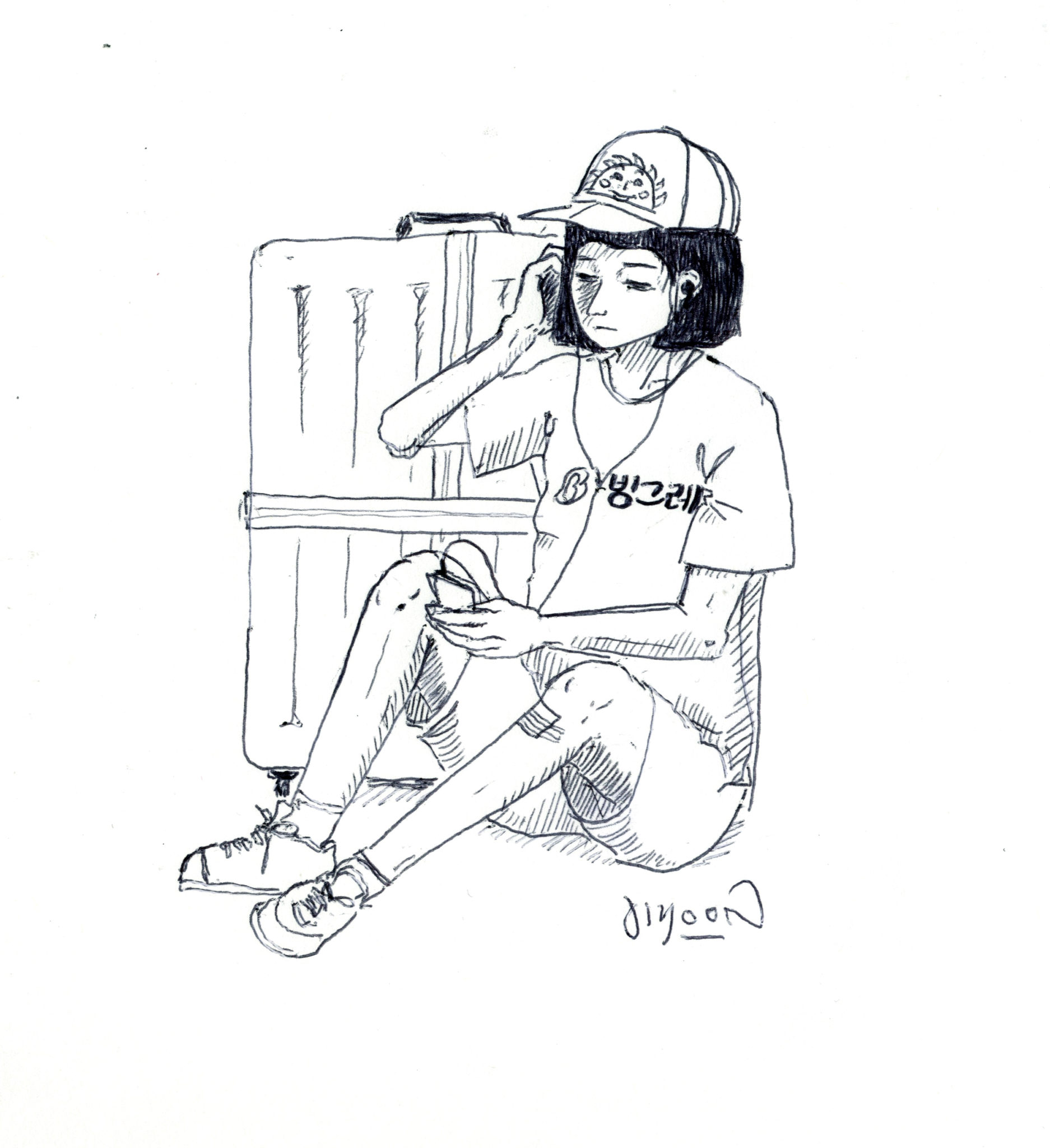
This past summer, I travelled to Vietnam for three weeks straddling July and August. Though I had visited twice before, the country was more lush and vibrant than I remembered. Luminous rice paddies, full of yellow-green stalks bent with the weight of rice grains, stretched out to horizons trimmed with rolling blue mountains. Spiky, watermelon-sized jackfruit, perfumed by a sweetly floral scent, hung from trees along the roadside. The roads themselves bustled with motorcycles, cars and water buffalo travelling every which way.
Early on in the trip, I noticed a strange phenomenon. Locals and tourists from other Asian countries alike would regularly examine me for extended periods of time — some were more conspicuous than others. I laughed out loud once I realized what they were trying to figure out. They were attempting to discern my heritage. I am Korean-Vietnamese American. My father is Korean, and my mother is Vietnamese. It was pretty amusing to see so many people try to assign a nationality to my features. My eyelids (double eyelids rather than monolids) and eye shape marked me as more Vietnamese than Korean, while my rounder face shape and paler skin pointed to my Korean heritage. My speech and style of dress, however, served as clear indicators of an American upbringing.
What fascinated me the most, though, was the contrast between others’ perceptions of me in America and Vietnam, as well as Asia, more broadly. In the States, I am simply seen as Asian or Asian-American, but, in Vietnam, I am perceived as an individual of mixed heritage, as a half-Korean, half-Vietnamese American. Being “Asian,” in the American sense of a loosely unified group with heritage rooted in Asia, carries very little weight or meaning in Asia proper.
Upon closer consideration, it is easy to perceive the narrowness of the term “Asian.” How can a single word express and encompass the breadth of diversity represented within the continent Asia? The geographic range from mountains to deserts, islands and tundra sets the stage for lingual diversification. Language serves as an accurate measure of diversity, as it is the means by which traditional practices are transmitted across generations and can be a barrier to cross-cultural interaction. According to Ethnologue, a website that has catalogued every known living language, Asia is home to 2,300 languages. In comparison, Europe houses 288 languages, nearly a full order of magnitude less than Asia.
Given the inevitable insufficiency of the term “Asian,” I could not help but wonder what purpose racial categorization serves. Perhaps it is simply a means to sort people into easily identifiable groups. But by what metric are people sorted? Physical features? Geography? Climate? The diversity within each of these arbitrary metrics is so easily hidden when collapsed into a sweeping categorization, as people are wont for in adopting a term as simultaneously broad and narrow as “Asian.” While intended to represent an expansive range of diversity, the term is simply too narrow in its current usage, in that “Asian” is unable to adequately express the diversity it is meant to encompass.
What is it that belies this diversity of culture in America? An important distinction to make is between Asians and Asian-Americans. Though often conflated in casual language, the terms can be separated by considering political connotations and the role of the American experience in shaping the idea of “Asian-American.” Though the children of Asian immigrants may hail from dissimilar cultures, they share an American upbringing, distanced geographically, lingually and culturally from their parents’ roots. Additionally, a common experience of racist remarks, discrimination in obtaining leadership positions (termed the bamboo ceiling) and either hyper-sexualization or emasculation chips away at historical and cultural differences that have a weighty significance for mainland Asians.
In fact, the term “Asian-American” was coined half a century ago in 1968 at the University of California, Berkeley in an attempt to unify Asian-Americans politically in the same way that African Americans had been unified through the Black Power movement.
And yet, there is a difference in the American experience amongst ethnic groups within the categorization of Asian-American. For East Asians — the group most commonly associated with the term “Asian” in America, according to the top definition of “Asian” on Urban Dictionary — it’s the Chinese tourists on campus that are made fun of, accents, slanted eyes (see “Breakfast at Tiffany’s” for a horrifying depiction of yellowface), but also the model minority myth, or the idea that Asian-Americans are, on the whole, doing well by nearly every metric and are the standard to be followed in education and the workplace by other minorities. This concept is a myth because it mainly focuses on East Asians, while ignoring the multitude of ethnic groups, mainly recent immigrants and refugees from Southeast Asian countries, who are hugely disadvantaged socioeconomically.
Regardless of the need for a reminder of the diversity encompassed by “Asian” or “Asian-American,” what can practically be expected? It would be unreasonable to expect every person I meet to recognize me immediately as half-Korean, half-Vietnamese and to understand the different branches of my heritage. I wonder if a step toward the solution lies in an expansion, even if a slight one, of the current usage of the term “Asian.” Merely keeping in mind the range of heritages encompassed and masked by such a term would be a movement in the right direction.
In Vietnam, it was such a strange, new and exciting experience to be carefully considered as an individual with unique cultural traits, even if only on a superficial level. Rather than identifying me under an impossibly narrow catch-all label within the span of a passing glance, people took time to wonder at the possibilities of my heritage. In America, rather than deciding a stranger’s roots and upbringing with a glance, take time to wonder at the possibilities that overlapping ethnic heritages may yield in forming her experience as an Asian or Asian-American.
Selena Lee | selena.lee@yale.edu







